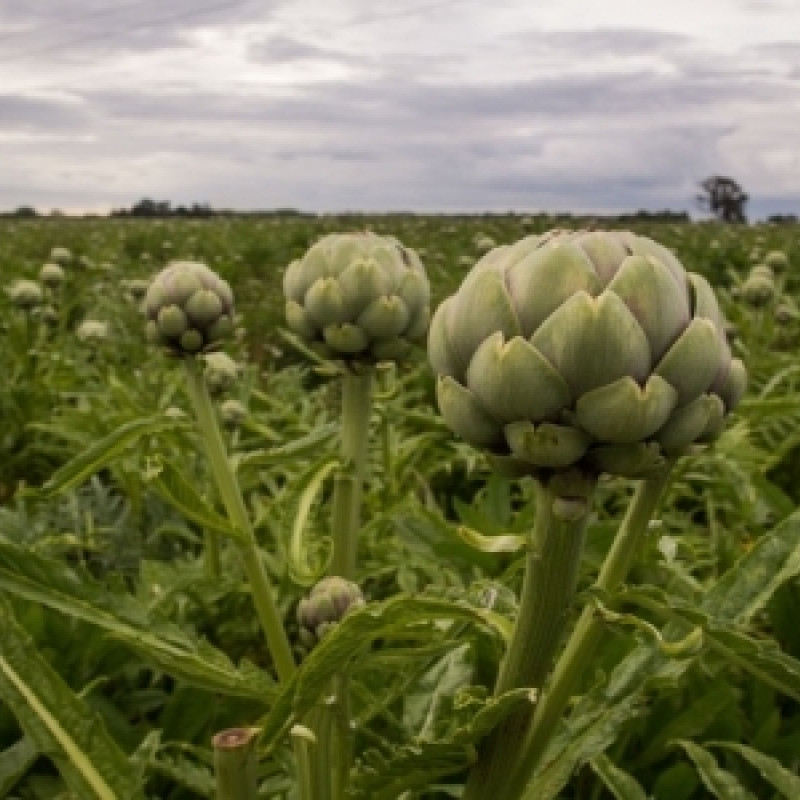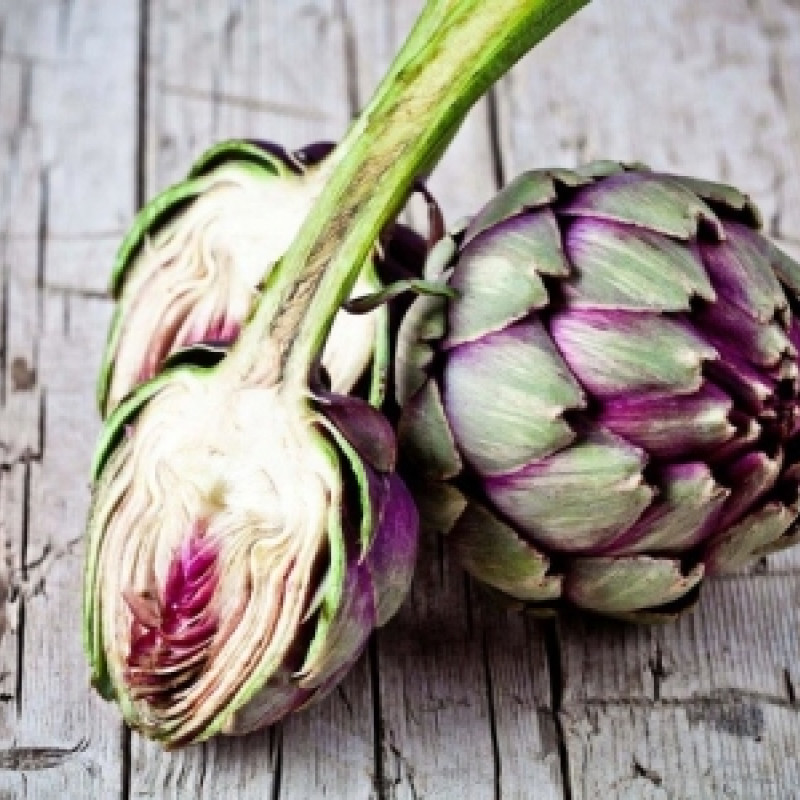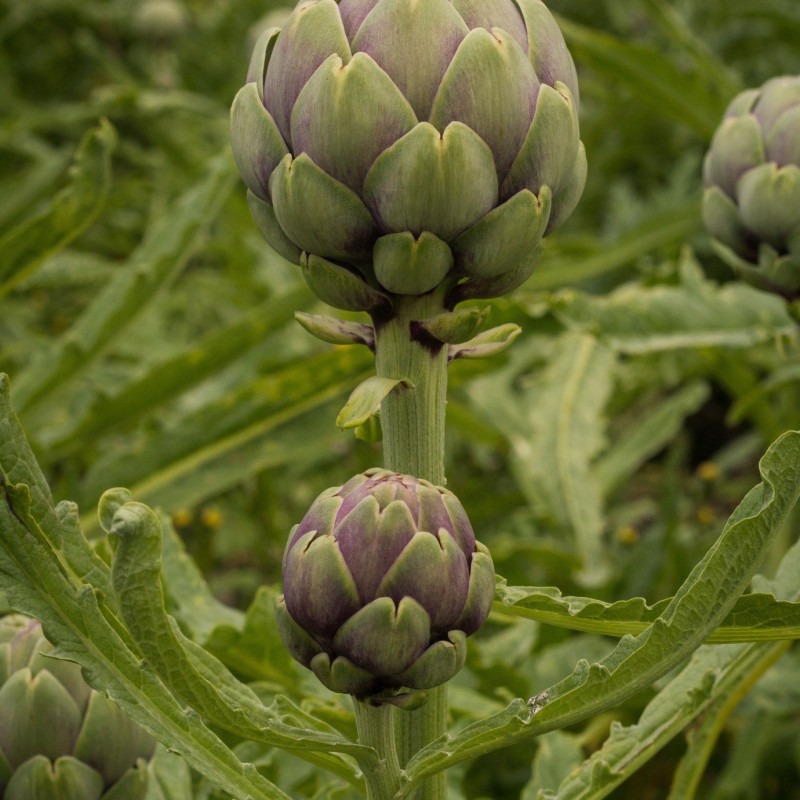Artichoke, globe - Atihoka
There are two well-known varieties of artichokes - globe and Jerusalem artichokes.
There are subtle taste similarities, hence the similar name, however, they are quite different vegetables in terms of appearance, texture and preparation.
Globe artichokes are considered a delicacy and have been grown in Southern Europe for many centuries. The part that is eaten is the immature flower bud before the flower appears, when it consists of overlapping green/purple scales.
Artichokes contain an unusual organic acid called cynarin which affects taste and may be the reason why water appears to taste sweet after eating artichokes. The flavour of wine is similarly altered and many wine experts believe that wine shouldn’t accompany artichokes.
What to look for
Globe artichokes should have a fresh bright colour, tightly closed leaves, and feel solid.
Availability
Available: October to January
Store
Store in the refrigerator or in the crisper in a vented plastic bag. Artichokes damage easily so handle with care. Best eaten within 2-3 days of purchase.
How to prepare
Remove the toughest leaves from close to the base of each artichoke and trim the stem to about 3 cm long. Trim the pointed ends of the leaves if desired. On large artichokes, remove the stem completely so the artichoke will sit flat on its base. The choke is the furry flower part sitting on top of the heart and may be removed before or after cooking, depending on how the artichoke is being used. The heart is the firm base plate and is the best eating.
Ways to eat
Add lemon juice to the cooking water to prevent browning when steaming, boiling or microwaving. Test if cooked by pulling one of the outer leaves; if this comes away easily the artichoke is cooked. Alternatively, cook until the stem end is tender when pierced with a skewer. Steaming and boiling will take about 20 minutes. Microwaving will take about 7-8 minutes per artichoke. Serve cooked artichokes with melted butter, hollandaise or a vinaigrette. They can also be stuffed, fried, baked, used in salads and eaten hot or cold. Remove the choke when cooked with a spoon. Click here for recipes.
Cooking methods
Bake, boil, grill, microwave, roast, steam, stuff.
Nutrition
Globe artichokes are a good source of dietary fibre and folate; a source of biotin, niacin, vitamin C and magnesium and contain a dietary significant amount of potassium. The main phytonutrients in artichokes are the carotenoids lutein and zeaxanthin, which are being investigated for their benefits for eye health.
Nutrition table
ARTICHOKE, Globe
Boiled, drained, no salt added
Nutrition Information
Serving size: 1 artichoke = 120g
|
Average Quantity (per serving) |
% Daily Intake (per serve) |
Average Quantity (per 100g) |
||
|
Energy (kJ/Cal) |
155/37 |
2% |
129/31 |
|
|
Protein (g) |
4.2 |
8% |
3.5 |
|
|
Fat, total (g) |
0.2 |
0% |
0.2 |
|
|
- saturated (g) |
0.06 |
0% |
0.05 |
|
|
Available carbohydrate (g) |
1.4 |
0% |
1.2 |
|
|
- sugars (g) |
1.4 |
2% |
1.2 |
|
|
Dietary Fibre (g) |
5.5 |
4.6 |
A good source of dietary fibre |
|
|
Sodium (mg) |
18 |
1% |
15 |
|
|
Folate (µg) |
107 |
53% RDI* |
89 |
A good source of folate |
|
Biotin (mg) |
4.9 |
16% RDI* |
4.1 |
A source of biotin |
|
Niacin (mg) |
1.7 |
17% RDI* |
1.4 |
A source of niacin |
|
Vitamin C (mg) |
10 |
24% RDI* |
8 |
A source of vitamin C |
|
Magnessium (mg) |
32 |
10% RDI* |
27 |
A source of magnesium |
|
Potassium (mg) |
396 |
330 |
Contains potassium |
|
|
Thiamin (mg) |
0.08 |
8% RDI* |
0.07 |
|
|
Iron (mg) |
0.6 |
5% RDI* |
0.5 |
*Recommended Dietary Intake (Average Adult)
Percentage Daily Intakes are based on an average adult diet of 8700 kJ
Your daily Intakes may be higher or lower depending on your energy needs
Source: FOODfiles 2018
Retailing
Display on refrigerated shelving if possible. Trim stems to make product more attractive, although excessive trimming may result in dehydration. Customers may not know how to use globe artichokes so use the QR code on labels. Provide ideas and recipes.
Store at 0ºC and 90-100% relative humidity. Globe artichokes are ethylene sensitive so store separately from ethylene producing products.
Purchase artichokes with the New Zealand GAP logo.
Images
For these images and many more please visit our image library.



